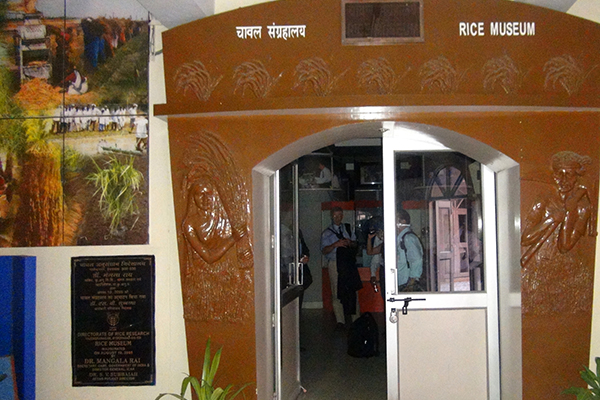In India, rice has been grown since time immemorial. Here, the rice grain has always been considered sacred. The spirit of the Divine is believed to reside in each rice grain. Rice is a symbol of fertility and being used in worship wherein grains are offered to God. Rice is the essence, a way of life and it is blended with festivals, traditions, rituals, and each walk of life of the rice farmers. It is seen in music (particularly folk songs), poems, art, and sculpture. Large parts of folklore have become interwoven with rice culture. For more than half of humanity, rice is life, providing its nurturing energy. Indeed, many consider the crop as the root of civilization.

In India, rice has been grown since time immemorial. Here, the rice grain has always been considered sacred. The spirit of the Divine is believed to reside in each rice grain. Rice is a symbol of fertility and being used in worship wherein grains are offered to God.

Rice is the essence, a way of life and it is blended with festivals, traditions, rituals, and each walk of life of the rice farmers. It is seen in music (particularly folk songs), poems, art, and sculpture. Large parts of folklore have become interwoven with rice culture. For more than half of humanity, rice is life, providing its nurturing energy. Indeed, many consider the crop as the root of civilization.
As a rice researcher for nearly four decades and as project director of the Directorate of Rice Research (DRR) for 5 years, I realized the need for establishing a rice museum that depicted a combination of traditional wisdom and the major breakthroughs of science and technology in breeding (release of Sub1 varieties and hybrids), management practices (direct seeding and aerobic rice), pest and disease management, crop resource management (agronomy), postharvest technology, engineering, biotechnology, and genomics.
An integral and crucial part of the DRR Rice Museum is a mural painting that gives a panoramic view of the various operations of traditional and science-based rice farming. It depicts the different rice ecosystems—irrigated, upland, shallow lowland, semi-deep water, deep water, and floating rice. It also shows seed production plots and hill rice.

The mural illustrates how rice farmers’ lives are governed and regulated by the seasonal rhythms of rice growing— sowing, planting, fertilizing, weeding, irrigating, harvesting, threshing, and hulling. Their lives from birth to death are bound to rice.
As the staff and collaborators of the DRR celebrate its 50th anniversary, the DRR Rice Museum is observing its 10th year of operation, having opened its doors on 31 March 2005. The panoramic mural, particularly, has been a solemn place for staff and visitors to pause in the museum—to take some quiet time to reflect on the importance and significance of India’s rich and diverse rice culture.
________________________________________
Dr. Mishra was project director for the DRR, 2000-05. During his time, 144 inbred rice varieties and 9 hybrids suited for different rice ecologies were released. He facilitated the development of hybrid rice in India, which is now planted on around 2.4 million hectares. He coordinated the largest AICRIP network on rice up to that time, having 47 funded projects and more than 90 cooperating centers with nearly 500 rice scientists.









